|
 De Moskouse metro.
De Moskouse metro.
 The
Moscow metro. The
Moscow metro.
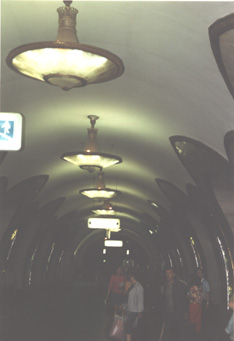
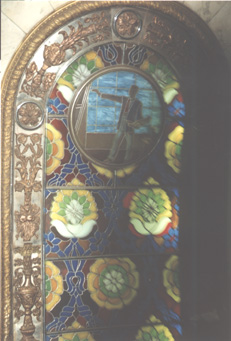
Novsloboelskaja station |
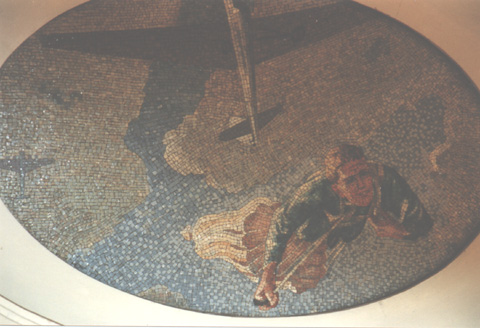
Majakovskaja station |
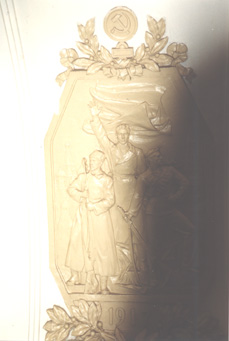
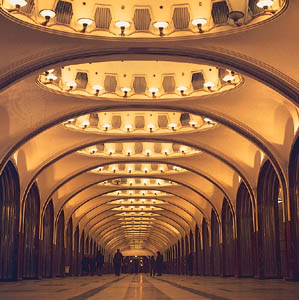
Mayakovskaya station (right) |
Metro architecture in Moscow has been through several stages of development.
The first Metro line commissioned in 1935 connected Sokolniki with the Park of
Culture (Park Kultury). After two more radial lines had been laid in the fifties a
circular line was laid to link together the main city railway stations. At present
Moscow Metro boasts nearly 150 stations and has ten lines.
From the very beginning Metro architecture has been fully exploited as a way of
exerting an ideological influence upon vast masses of people. The Soviet government regarded the Metro not only as a mode of transport but also as a
powerful means of propagating its ideas. As a rule this was expressed with the
help of decorative panels, relief's, sculpture, slogans and tedious heraldry.
Stations were built of durable natural materials: granite, coloured marble, steel
and disguised reinforced concrete rich in sculptural decoration and bronze
lighting fixtures, artistic glasswork and mahogany plywood.
Among the initial stations it is possible to distinguish two types: the first
stresses the underground siting of the halls by means of powerful vaults and
arches with heavy pillars (eg. Krasnye Vorota, Okhotny Ryad and Teatralnaya
Ploshchad). The second, in contrast, sets out to convey by architectural means
a feeling of light and space (Ploshchad Mayakovskogo, Kropotkinskaya, Aeroport, the latter capped with a unique vault).
At some Metro stations, from the beginning of the thirties to the fifties, the level
of decoration surpasses all reasonable limits. For example, each pillar at
Ploshchad Revolutsii station is decorated with four bronze sculptures, Komsomolskaya on the circular line is famous for the luxury of its cathedral
iconostasis and Naryshkin Baroque with huge expanses of coloured mosaics (architect A.V. Shchusev), created with an undeniable skill; the 'enfilade' of
well-proportioned oval vaults at Sokolniki station is also very beautiful (architect
I. Yakovlev). Metro stations were at that time designed in two types: triple-spanned and with a suspended floor. This gave some idea of the
development above ground, and was a way of giving each station a sufficient
degree of individuality. At the beginning of the sixties the government announced a drive to
simplify architecture and thus reduce costs; this included the Moscow Metro. This led to simple reinforced concrete structures, sometimes
above ground and of a utilitarian character (eg. Kutuzovskaya and Pionerskaya).
Underground stations were also simplified: instead of splendid pillars columns
were installed, veneered with thin stone; escalator vaults were faced with
aluminium rods. As the seventies gave way to the eighties, an unprejudiced,
less ambitious attitude towards Metro architecture made its appearance.
Several interesting stations were constructed at that time, among them Kuznetsky Most, Tsvetnoy Bulvar and Petrovsko Razumovskaya.


 |